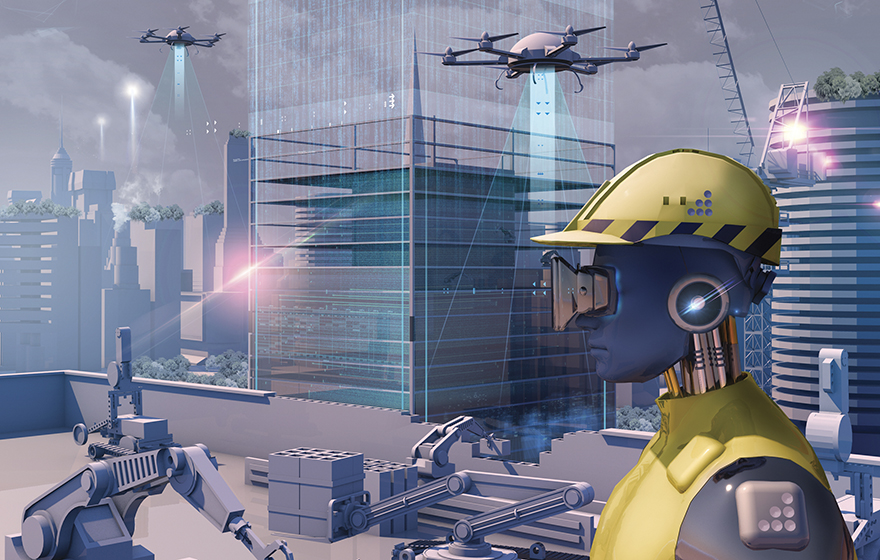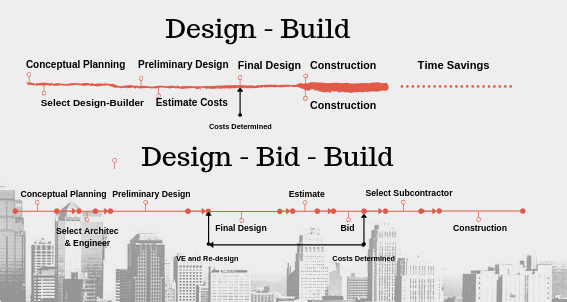
(Part 2 – Design-Build)
In the first part of our ‘Future of Construction Market” series, we looked at offsite manufacturing. This method of construction will be taking over a bigger portion of the small to medium multifamily construction market segments in 2020. This second part of our series is dedicated to another major trend. The utilization of the design-build project delivery method is growing and has the potential to bring innovation to the traditional construction market.
Long History and Growing popularity
The design-build method is considered a new, alternative approach to the traditional design-bid-build method. But in fact, the design-build concept is not new. Similar concepts have been widely used in the past. For example, a master builder concept was used in the Roman Empire and is very similar to the design-build method. A Master builder was the leading figure of construction projects similar to the Architect/Engineer or General Contractor in today’s design-build projects. In both of these methods, one entity takes overall responsibility and leads other team members from the early stages of the project life cycle.
The design-build method was reintroduced in the early 1980s, aiming to lower project costs and delivery times, while maintaining or improving project quality. Key driver for this reintroduction was the assumption that it will promote innovation and efficiency thanks to increased freedom for the contractors. This assumption was proven wrong. Soon after the reintroduction studies show no difference in degree of innovation between contractors driven design-build method and other delivery methods2. But lower project costs and faster delivery times have been proven in practice.
We can see how design-build improves efficiency in the chart below. It incorporates all primary stakeholders into the major decisions.

Close collaboration between the design team and subcontractors results in fewer design errors. Fewer errors reduces the amount of change orders which result in lower costs and time savings. The design-build method brings the best value solution taking into account cost, schedule, and constructability.
Other advantages of the design-build method are:
- single-source management and accountability
- better cost control
- decreased litigation risk associated with design-build
- lower risk for the owners
Design-Build in the coming years
According to a study conducted by FMI corporation, design-build is expected to account for 44% of total construction spending in 2021. This represents a 5% increase of market share since 2018. Design-build construction spending is anticipated to grow 18% by 2021, reaching over $320 billion. Of this, the majority is apportioned to manufacturing and education projects. The office market holds third place with 15% of total design-build spending.
The chart below demonstrates forecasted change of delivery method utilization between 2018 and 2021. The design-build method will be the fastest-growing method of delivering nonresidential projects. At the same time, utilization of the design-bid-build method will decrease by 8%.

What to expect? Design-build will dominate
The popularity of the design-build method will continue to grow in coming years. Already strongly positioned in the nonresidential market. We expect that Design-build will reinforce position and become dominant at large and middle-size nonresidential projects.
We already saw some of our residential projects switching to the design-build method and it is understandable. Lower risk is powerful motivation. This method will become preferred for large scale residential and tenant projects.
The residential market with small and middle-sized projects will be dominated by offsite manufacturing with CMAR and design-bid-build methods as the competing forces. As soon as offsite manufacturing processes are established, it will become a part of the design-build method. Engaging architects and engineers enable better control over the design process.
Cost-benefit analysis of nonresidential projects will streamline adaptation of the design-build method at the residential market. Further education of the owners will be crucial for future growth at the nonresidential market.
Contractors and subcontractors with strong engineering backgrounds will gain the most out of this market shift. Strong engineering background can minimize disadvantages of this method and bring back missing innovation. Innovation maximizes value but is diminished by budget-cutting practices, which are the most common for contractor led design-build projects in today’s market.
Metropolitan Engineering has established relationships with industry leaders in MEP construction. Together we are able to provide exceptional design-build services even for the most challenging projects. In our approach to the design-build method, we pay special attention to high-quality engineering design offering all advantages and highest value to our clients.
There is more!
Offsite manufacturing and Design-build are trends that will shape the future of the construction market. In the next part, we will take a look at the design-bid-build method. I will summarize predictions on the market. Stay tuned!
Questions?
Ask Matej.
If you want to learn more:
1FMI, 2018, Design-build utilization,
2Nystrom, Johan. Nilsson, Jan-Eric. Lind, Hans. 2016, Degrees of freedom and innovations in construction contracts
